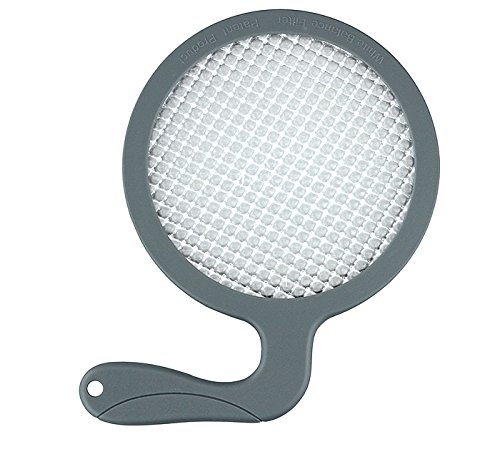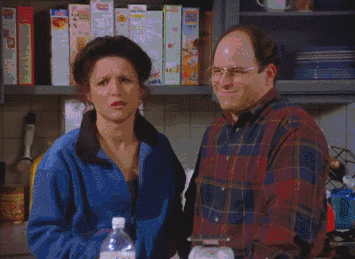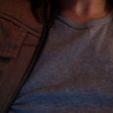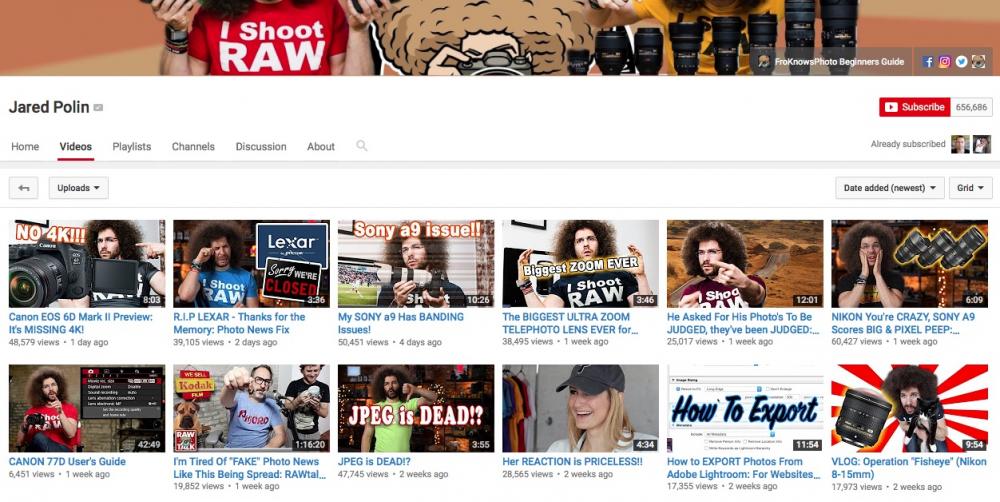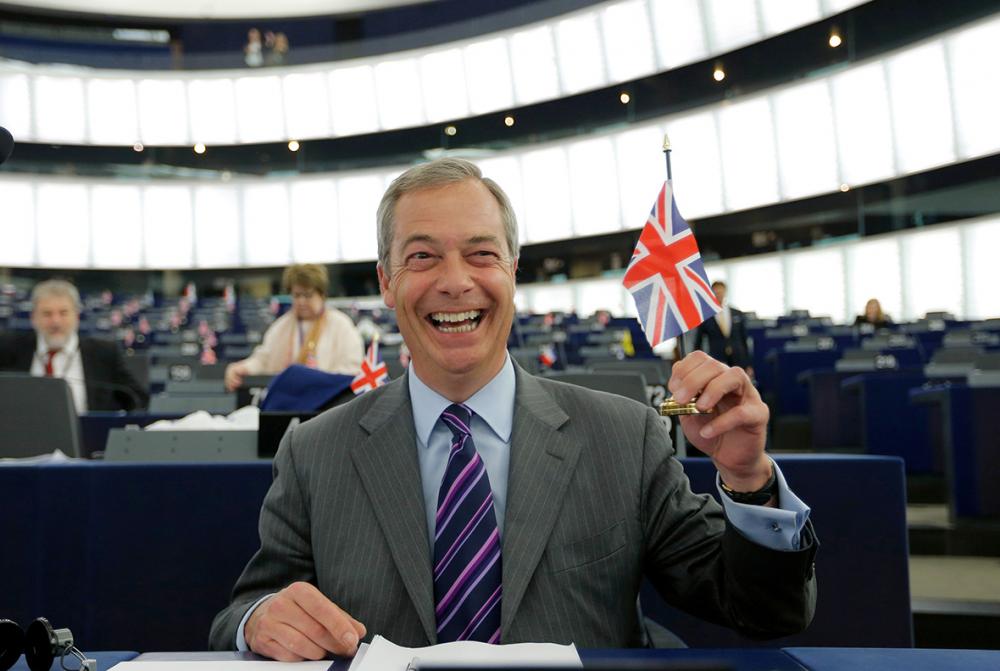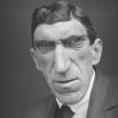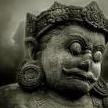Leaderboard
Popular Content
Showing content with the highest reputation on 07/01/2017 in all areas
-

Actually you can make the GH5 look very cinematic!
zetty and 5 others reacted to fuzzynormal for a topic
I think the reason this is a popular thread on EOShd is simply because this is a nerd site for cheap cameras. We know, or want to know, the intricacies of techniques and equipment. What we do with these bits of info, if anything, is another matter altogether. I will say that, personally, the people I know and admire creatively aren't obsessively concerned with the nerdy tech stuff. They know enough to work and the rest ain't a big deal ---or trust others to carry that water. That's my world though. Yours might be different.6 points -
Man, Jon I love your passion about filmmaking. I don't always agree with you, but I appreciate the depths you'll go to improve your craft. With that being said, ETTR is a bad habit to rely on. Sure it can work, but in a lot of instances you're setting yourself up for more work in post and risking ruining shots if you can't pull back those highlights or you end up with weird skin tones because now the curve is messed up. It all depends on the curve. sLog2 needs to be overexposed by about 1.7 to 2 stops, otherwise it is an unrecoverable, noisy mess. CineLikeD works best -2/3 to +2/3 depending on the shot. You have lucked out in your tests because you've needed the +2/3 and it seems to coincide with ETTR. Plus from your test, we've already surmised that since you are relying on the lens' aperture stops and not an incremental change from a variable ND or a clickless aperture that you are actually not even truly using ETTR correctly. Try it with an actor with a bright blue sky behind them and trees in the background in mid day sun. Or light an actor's face until 100% zebras appear and then back off with a variable nd, clickless aperture or the dimmer from the light. Those skin tones will be a pain in the ass to correct. Why do you think Panasonic cameras have their zebras set to 80% and 100% out of the factory? The 80% is for skin tones. These cameras are only capable of so much DR. I don't think it's worth the risk of losing shots with ETTR to get an extra half a stop. I respect your pursuit of craft, you have way more patience and skill than I have, but you would probably be better served with a light meter than from the Leeming LUT. In most instances, the camera's light meter is sufficient enough. I was constantly worried about ETTR after I dumped my EOS-M for an NX500 and all of my footage suffered from banding and bad color. Part of that was my lack of skill, but part was due to my ETTR with every shot, in every scenario, without regard. I did the same with the G7 and I had the same results. Finally, after getting the GX85, I started using the in camera light meter instead and I had better results overall. But it really wasn't until I got the D5500 which won't even meter on older Nikkor lenses, let alone has zebras, so I had to go back to exposing by eye and without a doubt it was some of my favorite and best work. No doubt that zebras are a tool and they are great for reference but they are not a reliable measurement of light and exposure. If you want or need that then you should definitely get a light meter. I don't mean to keep bringing this up to argue with you about, but if you Google ETTR and video, on the very first page, near the top, the infamous Ebrahim Saadawi's long post about it pops up. When I first started coming around this site, I thought he was an authority on video, I took some cues from his bloviated posts because I thought he knew his shit. We know how that turned out. Again I think ETTR can work in some instances and I would never not use it when needed. Hell, I use it most of the time now with ML Raw but even then, I will back exposure away if I feel the shot requires it.4 points
-
Actually you can make the GH5 look very cinematic!
Spgreen65 and 2 others reacted to Bioskop.Inc for a topic
You really need to start reading people's posts properly & perhaps between the lines a little. Some of us actually have genuine experience filming for proper production companies & have learnt a lot over the years. I'll repeat myself, Zebras should not be completely trusted & I wouldn't ever advocate someone using them at 100% - i've been filming for 15 odd years & I still don't put them at 100%. And we aren't allergic to scopes etc...it's just that sometimes you do need to trust yourself, rather than a computer, which might not always be right. In all frankness, a light meter is the way to go - always has been, always will be. Oh, and you can only properly use or get good results using ETTR with RAW! Not going to change my experience/opinion on this. Also, if people cared about image quality, why are there so many high profile TV dramas & Films that are loaded with Moire/Aliasing? And don't get me started on the Soft image vs. the Super Sharp..... Sound & Image are completely different animals - please don't confuse the two or use one as an example for the other. Amazon & Netfilx are really shaping up to producing some great content - watched OJKA last night & it was amazing (on Netflix now!). Good Grief, sometimes its like slamming your head in the fridge door & realising you should be using the oven.....3 points -
The Expodsic (or at least this £13 'equivalent' version) is a good cheap alternative to an incident light meter as well as being a quick and reliable way to set white balance. You just hold it over your lens whilst pointing to the light source that is falling on your subject so and when the camera meter hits centre then thats the exposure set correctly as the camera expects it to be because it is seeing 18% grey through the Expodisc. Its quite interesting to see how that can look on screen when you then take away the Expodisc and on the histogram (especially with cinelike d) as it is definitely not ETTR but sure enough with zebras at 100% the peak highlights are only just pinging the zebras. I wouldn't say its a definitive way to expose but its a very consistent starting point from which to make the decision and as its measuring whats falling on the subject rather than whats reflecting from it then its more appropriate IMO. Kicks arse for white balance setting.3 points
-

DPReview moan about Sony A9 banding with 7700hz LED advertising
Tim Sewell and 2 others reacted to BTM_Pix for a topic
The two major problems those LED ad board actually present to us shooting in stadiums as they become so widely adopted are : 1) We've had to get taller stools. 2) They are quite temperamental so you often have their techs crouching next to you and fiddling about with them. White balance changing in a fast burst due to floodlights pulsing is an order of magnitude higher as a lighting issue than the LED boards. For this LED board stuff to be causing a genuine problem for people shooting at stadiums with the A9 then people would have to be actually shooting at stadiums with the A9 in the first place. And in my experience, they're not. For reasons that have zero to do with banding. Such an odd thing to go after them for in the overall scheme of things with that camera. This image they've used to show the banding though.... I'm not being catty, because I don't mind that fro fella, but I don't look at it and think "Wow, look at the banding" I think "Where's the ball, why is your horizon off, why is the focus on the wrong player, why is it so noisy for a shot in broad daylight, why is it so heavily processed" If I sent that on the wire, it wouldn't be the banding that would be preventing it from getting published.3 points -

In memoriam
webrunner5 and one other reacted to Emanuel for a topic
Three years ago, Uwe Steinmueller... Had no idea, this time, the young Eskild Fors, some weeks ago. Distinct stories of life, but both wrote their pages in our lives as two talented digital contributors, unfortunately lost nowadays. My modest homage. https://www.google.com/search?q=Uwe+Steinmueller https://www.google.com/search?q=Eskild+Fors2 points -
So true. I worked with some people in my other other life years ago in music that actually had the reputation for creativity via cutting edge technology but who I found were surprisingly lacking in technical knowledge when it came to discussing some projects with them. They had a skill for recognising and exploiting the actual real benefits of the technology without being troubled by the minutiae all of its features. Being able to see the wood for the trees is a major skill in itself. Their other skill was finding nerds who could harvest these benefits for them. As its seeing exactly the same thing across the whole frame its theoretically agnostic to metering mode. Which is why I leave it on centre weighted2 points
-
2 points
-
it could be a 5D mark III, no ? How you can make the différence between a 5D mark II and a mark III with looking at these pictures only? @Andrew Reid You knew very well that the close-ups does not pose big broblem of moire and aliasing For a filming in FHD with a C300 and an XC10 the choice of a 5D mark III as a B camera It seems obvious to me And I think a "soft" image is more flattering for the face of putin2 points
-

1080 vs. 4K: What is REALLY necessary?
Mattias Burling and one other reacted to Trek of Joy for a topic
Most don't care about 4k because there's almost nothing being produced in 4k, globally there are very few 1080p broadcasts, much less in 4k. Why would anyone buy a 4k set only to have virtually nothing to watch in 4k? As others mentioned 4k is being pushed by Sony and Panasonic because they have 4k TV's to sell, not because of overwhelming consumer demand. Most don't care about 4k, because a vast majority of TV owners don't own a 4k set (the number of HD LED/LCD/Plasma sets sold in the last 15 years globally is many, many times higher than UHD) and have no plans to upgrade when it does nothing but drain your bank account since there's virtually no 4k content to watch. Most don't care about 4k because a vast majority of people shoot photos and videos and never do any editing or anything beyond sharing and filling up phones and hard drives. 1080p looks great on their 1080p TV. And finally most don't care because a majority of web video content is being viewed on portable devices - phones and tablets - 4k really doesn't do much on a 5" screen. Its not BS - TV sales tell you everything, HD still accounts for two-thirds of all TV's sold despite the fact that 4k prices have plummeted - people are still buying similarly priced 1080p sets in far greater numbers - and TV sales have flatlined after the flat-panel boom in the mid-2000's. Canon's camera sales, that people here continually bitch about, tell you everything. 4k is great for content producers and I personally love it to death, but for the rest of the world - which makes up a vast majority of camera purchases - 1080p is good enough. And I'm pretty sure Canon's market research goes a little deeper than "they're too dumb to know 1080p sucks, no 4k for the 6d2" SMH2 points -
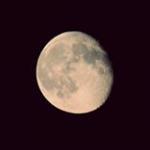
Samsung NX Speed Booster
lucabutera and one other reacted to Marco Tecno for a topic
If you enable dis, it'll introduce a small cropping.2 points -

DPReview moan about Sony A9 banding with 7700hz LED advertising
Eric Calabros and one other reacted to Andrew Reid for a topic
2 points -

DPReview moan about Sony A9 banding with 7700hz LED advertising
leeys and one other reacted to Andrew Reid for a topic
Let's see how many people he defrauds out of their money on DPReview before they do something about it.2 points -
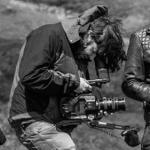
DPReview moan about Sony A9 banding with 7700hz LED advertising
leeys and one other reacted to Oliver Daniel for a topic
Wow, stinging article. Sadly the money wagon does take over in every genre of publication ever. It's great that EOSHD is still impartial, brutal, sometimes funny, insightful and on a few occasions, off the rails! But I like that. It's genuine and human. I cant give an opinion on DPReview, I've barely read it as I find the site design frustrating. Oh, and Ebrahim is a video genius, obviously. His knowledge is the greatest thing on Earth2 points -
2 points
-
i hear you, this is what im thinking might work best. giving a good 3d sculpt artist a mediocre 3d model and tons of great reference photos would prolly work out just fine (?) thanks for the info and links jcs, im checking them out rn~!!! i think i need a place in LA that does this, right? and id give that 3d file along with a bunch of great reference photos to a 3d sculpt artist – how does that sound? although my ultimate goal may be to make a giant sculpture – far beyond the scale of the current capabilities of 3d printing, as bunk explained – i like the idea of having a great 3d model to make editions of small ones, different sizes, out of anything, plastic, metal, chocolate (lol). in the future ill prolly be able to 3d print one that looks like a cut diamond or something ridiculous personally i think that ron mueck is a genius and i like his work very much. unlike jeff koons (ballon dog, above), ron actually makes his pieces himself his beautiful hyperrealistic sculptures tend to have an obvious surreal twist, which just for the record is not what im going for, im shooting for Friendly Doggee lol1 point
-
1 point
-
Multicamera photogrammetry is the best solution for objects which can move, such as pets. This is not 3D scanning, since the capture is simultaneous, instant: You can do photogrammetry with just one camera for still objects or even people if they hold fairly still, this is a form of 3D scanning: https://www.allegorithmic.com/blog/go-scan-world-photogrammetry-smartphone http://www.agisoft.com/community/showcase/ (one of the better quality solutions) http://www.photomodeler.com/ http://www.photomodeler.com/products/scanner/default.html This is pretty cool, though low res last time I looked at it: https://structure.io/ (uses a depth sensor along with a camera; really a developer tool at this stage vs. consumer/professional product) http://3dscanexpert.com/3-free-3d-scanning-apps/1 point
-
Do you guys know anything about 3D scanning/printing?
kaylee reacted to HockeyFan12 for a topic
I have an acquaintance who works for one of the larger 3d scanning companies. They use reality capture for software (widely available) and about 100 consumer-level dSLRs in an evenly lit space designed to reduce specularity on the subject. You could set this up too but the 100 dSLRs gets expensive. There are consumer-level 3D scanners but they're too low res for what you want to do. I would give a call to some of the higher end 3d scanning houses.1 point -
1080 vs. 4K: What is REALLY necessary?
Trek of Joy reacted to HockeyFan12 for a topic
Why is it then that none of the major networks (tv and cable) broadcast in 4k? And the majority of DCPs are 2k, even when the source material is 4k and above? Sure there are 4k tvs everywhere (as there were 3d ones everywhere a few years ago), but in terms of content creators and distributors, it's really only Netflix and YouTube Red that care about 4k. For everyone else it's a buzzword. Sure there are 4k tvs, it's planned obsolesce and marketing. But how much 4k content are people watching on those tvs in 4k is a good question... Netflix's 4k streams look imo worse than a good blu ray. More high frequency detail but worse tonality, with more mosquito noise and compression. YouTube 4k looks worse. For network and cable tv and for normal wide theatrical release, 4k doesn't matter. For IMAX it matters, but only maybe 20-30 features get IMAX releases a year. For YouTube and Netflix it matters, but not for image quality so much as marketing (again, a good 1080p blu ray looks better 90% of the time). Almost anywhere else? Not really a factor. I can see 4k mattering more for Vimeo than for theatrical release, since laptops have high res screens and you hold them close to your eyes. But most staff pick are still 1080p and resolution doesn't seem to drive how they're chosen... so I'm still confused by why you place so much value on a fairly insignificant feature. I do understand the need for 4k. For the occasional vfx background plate or stock footage that might get punched in on, absolutely. On a GoPro you need all the resolution you can get for stabilization and de-fisheying. 4k on GoPros is great. I just don't understand the wider need for 4k on production cameras outside IMAX features, and YouTube Red and Netflix shows, where I would still argue it's mostly a buzzword. And that's such a narrow target where next to nothing is sourced on consumer-grade cameras anyway (Netflix's cheapest acceptable 4k camera is the BM 4.6k). So the purpose of 4k on consumer cameras to me is and always has been marketing. I dunno. I don't see the appeal. Diminishing returns in image quality for a massive increase in time spent in post.1 point -
I was referring to being a kid in England in the 1970s. We frequently ate soil.1 point
-
I have always been told chocolate is very bad for a dog. I have to Google this now... Wow, that's what I thought, it is poisonous to them. PLEASE DON'T give dogs chocolate!1 point
-
That's true. A few of the better people I know don't know much about the tech either because that's not what they are into. But... I will say that when I see these people and work with them I often teach them many things to help them produce better work and some of the best work they produce is when I (or someone else) is shooting and they are meerly editing the stuff. Different people are good at different things, that's life.1 point
-
1 point
-
Aaah ok. Am still keeping my fingers crossed. I just got back from a trip without a camera. But I think the colors on the GX85 would make a great VLog. Thanks for the prompt reply. I am keeping my fingers crossed.1 point
-
Actually you can make the GH5 look very cinematic!
Cas1 reacted to Mattias Burling for a topic
True. The TV crew shooting a reality show where I work used an F5. They also had for example a small hd with the sidefinder. When I asked about it they had no idea what I was talking about. They where creators first, tech guys second and forum nerds last/not at all1 point -
I consulted on a project a few years ago where the product was 3D printed pets. I recommended photogrammetry for the capture since all cameras can fire at once: if the pet isn't perfectly still, not a problem. The end result is a very high quality 3D object and texture map. This company uses your own photos, so there's a bit of art / manual modeling going on. Less accurate, but perhaps more affordable than shooting in a multi camera booth and using photogrammetry: https://3dprint.com/160671/furever3d-3d-print-miniature-pets/1 point
-
I How about approaching Ron Mueck ...I think you can skip the scans1 point
-
Pro camcorders? They're pointless creatively.
HockeyFan12 reacted to ssrdd for a topic
Sony fs5 is a bummber from the beginnng from the day one why cry now1 point -
Viners on Youtube
HelsinkiZim reacted to mercer for a topic
If you liked him in 2002, then you should definitely go back and listen to him during the OJ trial. His show was never as good as it was then.1 point -
1080 vs. 4K: What is REALLY necessary?
TheRenaissanceMan reacted to HockeyFan12 for a topic
I agree that it's choice, but everyone's choices are informed by different priorities. While it might mostly be consumers blindly choosing the name brand who are buying Canon, it might also be that 4k isn't a priority for most consumers (and pros). The Alexa, too, is still essentially a 2k camera. It offers a LOT in exchange for this trade off. IMO, certain Canon models do too. Mostly in terms of ergonomics, color, and DPAF. Ultimately, I think whatever tool makes you enjoy the process most will be the one that results in the best result, and the result will sort of be tailored to the process anyway. So if art is subjective and mirrors you, then whatever equipment you prefer is the equipment you need to use to do you at that given moment. (Try something new and challenge yourself from time to time, though. Shoot 16mm!! You'll only know yourself better after trying.) Of course, on set, a 5D Mark II might be a lot of fun. It's tiny and easy, and the viewfinder image looks ok, but in post you have a shitty image to work with grading is gonna suck. Or a DP might love the Red Helium and the editor hates it, or the DP might hate the Alexa or C300 and the editor loves it. So when you're only the DP or only the editor you're gonna have really different priorities than your fellow creatives... and you're gonna see weird preferences and messy workflows and in-fighting and... well... a less fun process. (The Alexa is kind of great on set and in post... ditto the C300 Mk I. They both did well commercially... Just sayin'.) For most of the people here, this is a hobby. We're probably shooting and cutting and grading our own footage. So if we want to keep doing that, we'd better make it fun. For the pros among us, they want the easiest job possible while still enjoying the work and delivering a good product. Fairly similar priorities. You've gotta love it to do it. So I'd say let the Canon hate go and focus on the Panasonic/Sony/BM love. For the portrait shooter dead set on a full frame stills camera and the 85mm f1.2... just let them have their 6D Mark II, they won't even switch the knob to video. They'll have a blast. I know it drives clicks trashing there 6D, but you know why Canon and Arri are doing well in the market. And why the 1DC failed despite it being a great camera. Fwiw, I can imagine scenarios in which I'd absolutely need 4k. I like Canon, but I still wish their cameras shot 4k prores.1 point -
1 point
-
Actually you can make the GH5 look very cinematic!
mercer reacted to Bioskop.Inc for a topic
What i found with [ML] RAW is that ETTR only needs to be used to help clean up the noise in an image when filming in dark situations & a complete waste of time in well lit places - but that's obvious, right? There is too much misunderstanding about how or when to use this technique & I've had so many DOH! moments when watching footage of people using it in nice daylight! I'm with you, I expose to what my eye likes & then peep a little at the zebras. When I first started out, a seasoned cameraman told me that to begin with I should set the zebras to around 70-80% & then as I got used to exposure, move up to a max of 90% - he said never set at 100%, because it'll only show the hotspots that are really blown & mask other areas of the image that won't look blown, but can very easily be unrecoverable. This is mainly because zebras aren't 100% accurate & should always be treated as such - they put you in the right ball park, but never tell you the whole story. The only thing that will be accurate is a light meter. Is that because you're using a Black Pro Mist filter & the result has a more pleasant rendering for blown highlights - to my eyes they really bloom softly & become a lot more pleasing to the eye.1 point -
I'm all for these discussions about the virtues of 1080 vs 4K vs 8K, but let's be honest here, the "push" for 4K (and beyond) is largely being driven by the corporations that NEED a new tech breakthrough to survive. The adoption of 4K, 8K (etc) by professional content creators is one thing - but it's the adoption of these new resolutions by their bread and butter consumers that the corporations are banking on, because it will force people to update every gadget and piece of tech they currently use/own and give companies a new lease on life. But there is no overtly unanimous, genuine/organic demand for anything higher than 1080 from the wider consumer base. It's all coming from the corporate end and of course some pro/pro-sumer content creators that see the practical benefits of 4K and 4K+.1 point
-

Samsung NX Speed Booster
Francesco Tasselli reacted to Andrew Reid for a topic
That shot is 3:2 or 4:3... In video mode 16:9 those dark corners will be gone, no?1 point -
Canon 6d mark 2 it´s official
Steve Brule reacted to wolf33d for a topic
Some here can guess which year we will finally have a right camera? I mean, PROS from some manufacturers are CONS from others. Sony = poor ergonomics which is a Pro of Canon and vice versa and that goes for every pros and cons. Since years I have been begging for 1 manufacturer to bring those Pros together. Truly Camera market is the most disappointing industry in the world. Canon, give us a FF mirrorless with rotating multitouch screen + PDAF + EF Mount + usual colors and ergonomics + GH5 video specs and be done with it. No one on this planet having more than 2K to spare and interested in photo + video would buy anything else. Sony would be instantly dead. So what are you waiting ?1 point -

Canon 6d mark 2 it´s official
Eric Calabros reacted to Andrew Reid for a topic
Sure all those things are important for photographers. And the 6D Mark II is nice ergonomically. But there's no getting away from the fact that the 6D came out in 2012, the 6D 2 in 2017, and in between 5 years passed, Canon added Dual Pixel AF, which they have had lying around in the cupboard since 2013 with the 70D, a tilt screen, which the original 6D should have had in the first place, but they said "nah" it wouldn't be possible due to weather sealing, so now they have it on there with weather sealing anyway, so chalk that down to another fib, and as for the improvement in low light, you expect that as a given after 5 years of sensor development, it's probably not really very different from a Nikon D750 and I am sure 5D Mark IV owners are really over the moon about having worse low light performance than the 6D Mark II and no articulated screen for their extra $1500.1 point -

Canon 6d mark 2 it´s official
Eric Calabros reacted to Andrew Reid for a topic
Photography has got to move forward. We have been using the same shit for decades. Mirrorless is a step in the right direction of course. Samsung tried a very brave thing with a huge touch screen on the Galaxy NX, the only Android based Super 35mm interchangeable lens camera on the planet and customers didn't buy it. So perhaps Canon's customers are to blame for Canon. If all they want in 10 years of technological innovation is the addition of a swivel screen, then so be it.1 point -
This is a very good concept! I think nowadays 8-core smartphones have more processing power each year then RED's homebrew ASIC. In my opinion it would really make sense.1 point
-
I would like to think its a Interchangeable mount SLR with a phone / computer type device for its brain and screen. I was hoping for someone to do this with android when Samsung started sticking cameras on to their Android phones1 point
-

RED 1D C alike modular camera
Emanuel reacted to Andrew Reid for a topic
Appears to have a DSLR style grip and body, even a top panel LCD info display, but the cage is built into the body and the bomb EVF is on the side not at the back, which is a good thing.1 point -
RED 1D C alike modular camera
Emanuel reacted to zerocool22 for a topic
Smartphone with a lens mount? Whatever it is, its going to break your bankaccount ^^1 point -

Kowa AmamorphiC 35 - 1.5x
Ian Edward Weir reacted to brianmcall for a topic
I have this lens & will soon receive a HCDNA to use with it for single focus.1 point -

FULL FRAME or SUPER 35 - What do you prefer and why?
kidzrevil reacted to fuzzynormal for a topic
f5.6 on s35 is a common preference for people (narrative fiction cinematographers) that actually do this stuff for realsies. So I find that the "FF" aesthetic argument is pretty indulgent for the most part. On the other hand, technically, you can get some great low-light capability...and that's something practical to actually consider depending on what you want to do. That said, I still carry around my 5D and an old 50mm Nikon f1.4 lens for making easy and great looking corporate interview type shots. If anything, using FF for talking head documentary type work is my idea of FF's strongest aesthetic "feature."1 point

